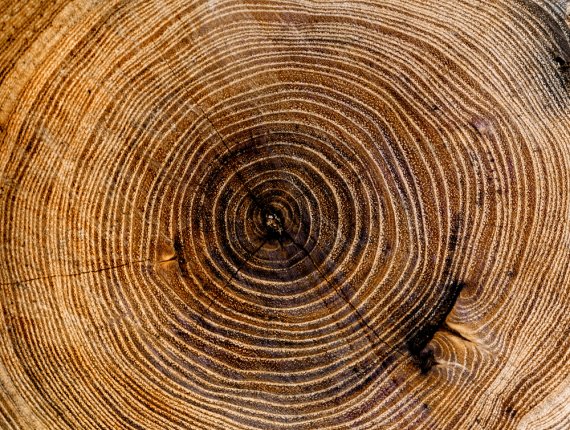Text: Nicole van ‘t Wout Hofland
Trees expand outwards throughout their lives, with a new ring being formed each year. If conditions are favourable, the tree will grow fast and form a wide ring, whereas stress leads to less growth and accordingly a narrower ring. This lets scientists look back in time and analyse the tree’s life history. In a major collaborative venture, associate professor of Forest Ecology and Forest Management Frank Sterck and professor of Vegetation, Forest and Landscape Ecology Koen Kramer studied the width of tree rings. They discovered that the resilience of trees after severe droughts is a key indicator for the likelihood of survival in future dry periods.
Deciduous trees and conifers
The relationship between resilience and the probability of survival turned out to be the same for deciduous trees and conifers all over the world. The authors were surprised. ‘Conifers produce a different kind of wood and are often found in colder, drier areas than deciduous trees,’ says Sterck. ‘We had therefore expected conifers to react differently to severe drought than deciduous trees.’
However, the scientists did find a difference in the way deciduous trees and conifers deal with drought. In both cases, there were two phases: resistance and recovery. In deciduous trees, it was the resistance that predicted their chances of survival. If a deciduous tree has a wide ring in a year of extreme drought, that indicates high resistance to drought and therefore a better chance of surviving another dry period. In conifers the recovery is the predictive factor: conifers with narrower rings after a dry year presumably took longer to recover and are more likely to die in a future drought.
Hand drill
Can we only estimate a tree’s chance of surviving by felling it? ‘Fortunately not,’ laughs Sterck. ‘We use a hand drill to extract a long, thin strip from the tree trunk, which we then polish to reveal the annual rings.’ Removing a strip like that does not have an adverse effect on the tree. ‘The tree can simply close that hole,’ says Sterck. The new method gives forest managers a new tool: when thinning, they can select the trees with the smallest probability of surviving a drought and thus keep forests healthy.

 Photo: Shutterstock
Photo: Shutterstock